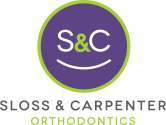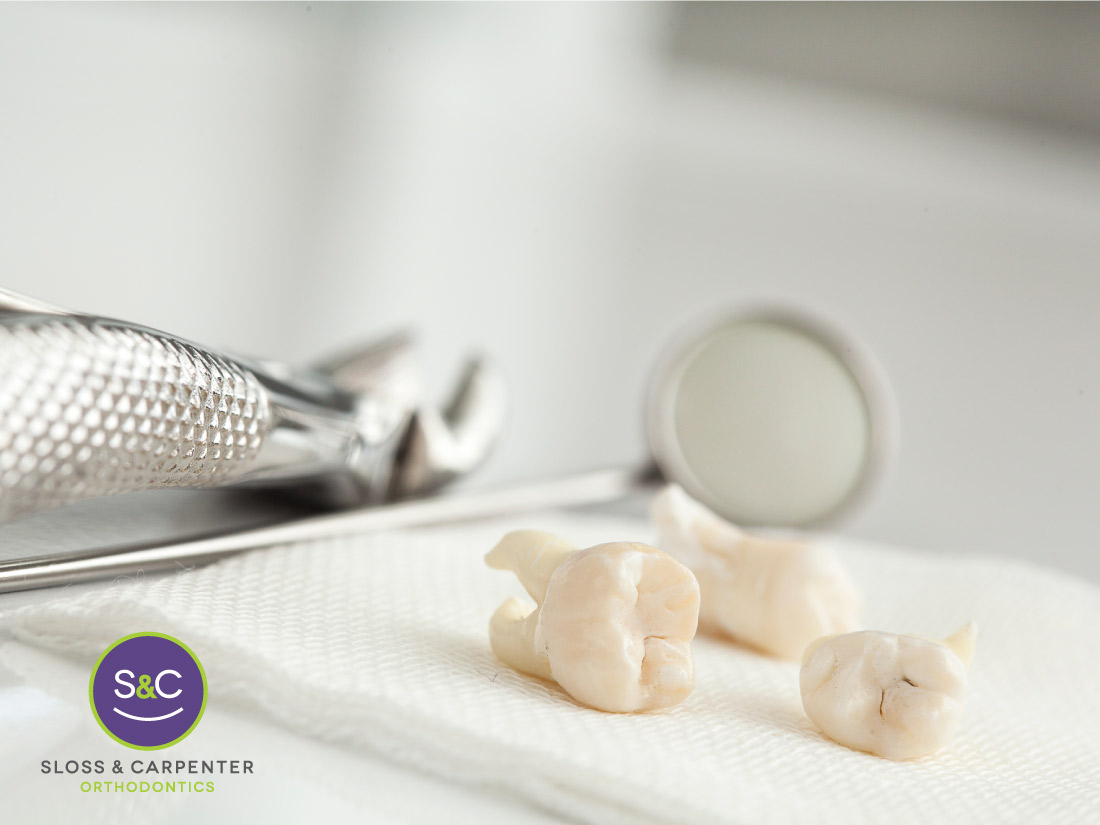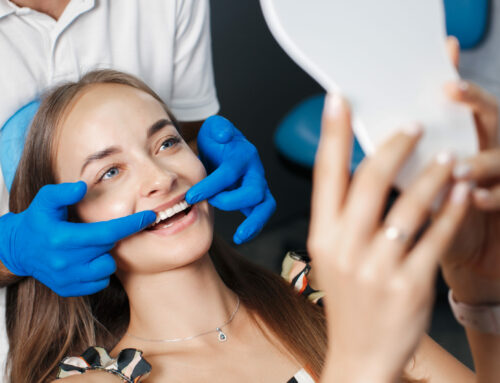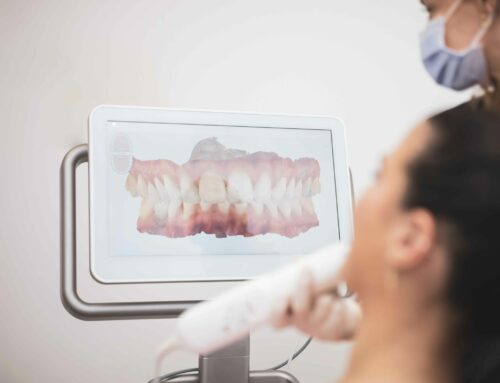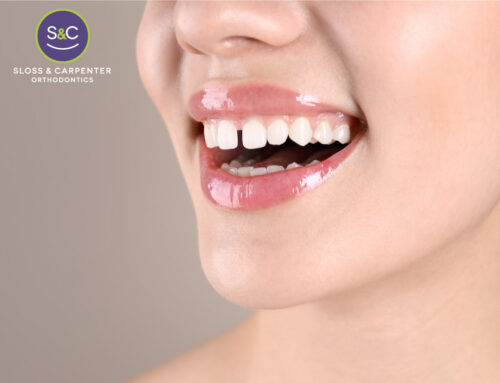The transformative process of orthodontic treatment Centennial, whether with traditional braces or clear aligners, is a significant step towards achieving a confident, radiant smile. However, unforeseen circumstances may arise during orthodontic treatment, and one critical aspect that demands attention is emergency tooth extractions, often classified as dental emergencies. Dealing with these situations appropriately is paramount to ensuring the continuity and success of orthodontic treatment at Centennial.
Centennial Orthodontic treatment, encompassing diverse approaches such as braces or clear aligners, aims to address issues related to dental misalignment, crowding, and bite irregularities. Despite the careful planning involved, there are instances where dental emergencies, including the need for permanent tooth extraction, become necessary. The importance of understanding and effectively managing these situations cannot be overstated, as they directly impact the overall success and patient experience during orthodontic care.
This comprehensive guide highlights the reasons behind emergency tooth extractions during orthodontic care, the procedures involved, and the subsequent post-extraction care. Moreover, whether you are undergoing traditional braces or embracing the discreet path with clear aligners, being informed about potential challenges and their solutions is instrumental in confidently navigating your orthodontic transition to a beautiful smile.
Why Emergency Tooth Extractions May Be Necessary During Orthodontics
Impacted Wisdom Teeth
Impacted wisdom teeth, nestled at the back of the mouth, can pose significant challenges during orthodontic treatment. These third molars often lack adequate space for eruption, leading to pain, inflammation, and potential disturbances to neighboring teeth. In such cases, extraction becomes a prudent measure to prevent further complications and control dental infection.
Additionally, many patients think these wisdom teeth might affect orthodontic treatment by exerting unnecessary strain on neighboring teeth. Here, we demystify this assertion. In fact, wisdom teeth, despite posing a significant risk for adjacent when infected, lack the stressing force needed to alter the position of the rest of the teeth. So, science and we have debunked a myth.
Severe Crowding or Misalignment
Orthodontic cases involving severe crowding or misalignment may necessitate strategic tooth extractions. Extraction becomes a thoughtful intervention when the dental arch lacks the necessary space for optimal alignment. By selectively removing specific teeth, we create space, allowing the remaining teeth to align harmoniously, promoting a healthy smile and preventing soft tissue injuries.
Trauma or Injury
Accidents or trauma can introduce unexpected complexities to orthodontic treatment. Swift action is crucial in cases of tooth fractures or structural compromises due to injury. We may require emergency extractions to address the immediate concerns and pave the way for a seamless continuation of orthodontic care, preventing severe pain and promoting healing. Yet, in these circumstances, Dr. Sloss would corroborate the need to modify the original orthodontic plan.
What to Expect During an Emergency Tooth Extraction
Consultation and X-rays
Our Centennial orthodontists conduct a comprehensive consultation upon identifying the need for an emergency extraction. Indeed, Dr. Sloss employs advanced imaging techniques, including X-rays, to gain precise insights into the nature and extent of the issue. This diagnostic step is pivotal in sharing it with a referred dentist or oral surgeon to formulate a tailored extraction plan, ensure effective dental treatment, and revisit the orthodontic plan.
Local Anesthesia
Ensuring patient comfort is at the forefront of the dentist or oral surgeon approach. Before commencing the extraction procedure, the specialist administers local anesthesia to numb the targeted area, minimizing or eliminating pain during the extraction and contributing to an overall positive patient experience, preventing severe pain and discomfort.
Yet, we strongly encourage our patients to seek information about the different types of anesthetics available and recommended at the dentist’s office. Determining pain management according to the situation is crucial to anticipate and underscore the possibility of allergic reactions or unwanted reactions to anesthetics potency.
Tooth Extraction
The extraction process itself is executed with precision and care. The dentist or Oral Surgeon gently removes the affected tooth using specialized instruments, minimizing discomfort. This meticulous approach is crucial in preserving surrounding tissues, preventing soft tissue injuries, and supporting an uneventful recovery.
Moreover, guaranteeing an effective and careful tooth removal implies paving the way for the orthodontist to work seamlessly by having healthy and unbroken tissue that would respond favorably to orthodontic treatment after extraction.
Post-Extraction Care
Guiding patients through post-extraction care is integral to the overall treatment. The extraction specialist will provide detailed instructions on managing pain, avoiding specific activities that may impede healing, and maintaining optimal oral hygiene. This post-extraction care plan ensures a smooth and swift recovery process, reducing the risk of dry socket and post-procedural bleeding.
Emergency Dental Care After an Extraction
Keep the Area Clean
Maintaining cleanliness around the extraction site is paramount. The extraction specialist, whether a dentist or an Oral Surgeon, advises patients to gently rinse the mouth with warm salt water to promote healing and minimize the risk of infections. This infection prevention measure is crucial for a healthy smile.
Avoid Certain Foods and Activities
To facilitate optimal healing, patients should refrain from consuming hard or sticky foods that could potentially disrupt the extraction site. Strenuous physical activities that might compromise the healing process. During the initial recovery period, we encourage patients to rest, ensuring effective control of infections.
Take Pain Medication as Directed
The dentist or Oral Surgeon might recommend prescribed or over-the-counter pain medication to manage post-extraction discomfort. Adhering to the prescribed dosage ensures effective pain management, preventing severe dental pain without compromising overall health.
Attend Follow-Up Appointments
Regular follow-up appointments with the dentist and orthodontists scheduled to monitor healing progress are pivotal to addressing any emerging concerns. These appointments ensure that the recovery process aligns with the overall orthodontic treatment plan, preventing post-extraction bleeding and promoting an attractive smile when resuming orthodontic treatment.
Preventing the Need for Emergency Tooth Extractions During Orthodontics
Practice Good Oral Hygiene
A proactive approach to oral hygiene is foundational in preventing issues that may lead to emergency extractions. Regular brushing, flossing, and the use of antimicrobial mouthwashes contribute to maintaining optimal oral health, preventing tooth decay, and the need for teeth extraction.
Attend Regular Dental Check-Ups
Regular dental check-ups serve as proactive checkpoints in identifying potential issues early on. Timely interventions during these routine appointments mitigate the risk of complications that might necessitate emergency extractions, facilitating regular risk assessments.
Follow Your Orthodontist’s Instructions
Adhering to the personalized instructions provided by our orthodontists is paramount. This includes diligently wearing orthodontic appliances as directed and promptly reporting any concerns or discomfort regarding post-extraction discomfort for timely intervention, preventing unwanted emergency situations.
What Are All the Cases That Come Under Emergency Dentistry?
Chipped Tooth
A chipped tooth, often due to trauma or biting on complex objects, may require immediate attention to prevent further damage. In such cases, emergency dental care focuses on preserving the tooth’s integrity, potentially avoiding the need for a dental extraction.
Knocked-Out Tooth
A knocked-out tooth demands swift action. Quick responses, such as gently placing the tooth back into its socket or storing it in milk, can significantly increase the chances of saving the tooth. Immediate dental attention is critical in these scenarios, potentially avoiding the need for tooth removal.
Lost Filling or Crown
Losing a filling or crown exposes the underlying tooth to potential damage and sensitivity. Emergency dental care involves promptly addressing the exposed tooth to prevent further complications, potentially avoiding dental extractions.
Broken or Fractured Tooth
A broken or fractured tooth, particularly if accompanied by pain, necessitates prompt dental attention. Depending on the severity, a specialist might consider an extraction as part of the comprehensive treatment plan, potentially preserving natural teeth through root canal therapy.
Dealing with the challenges of emergency tooth extractions during orthodontic treatment, our commitment at Sloss & Carpenter Orthodontics extends beyond clinical expertise. We strive to educate and empower our patients, ensuring they are well-informed participants in their oral health journey. Trust that, in any unforeseen circumstance, we are here to guide you with precision, care, and dedication to your overall well-being, promoting an attractive smile and optimal dental health.
Unveil Your Best Smile
Our orthodontic expert, Dr. Sloss, collaborates seamlessly with referred dentists for smooth tooth extractions during treatment. Benefit from in-depth consultations, expert referrals, and a patient-centric approach. Experience a comfortable extraction process with precise techniques and local anesthesia.
Post-extraction, receive comprehensive care instructions for a swift recovery. Your treatment doesn’t end there—continue with ongoing orthodontic support. Don’t let extractions hinder your dream smile. Please schedule your appointment today and trust us for an expertly guided, coordinated, and satisfying orthodontic experience. Your perfect smile awaits!
